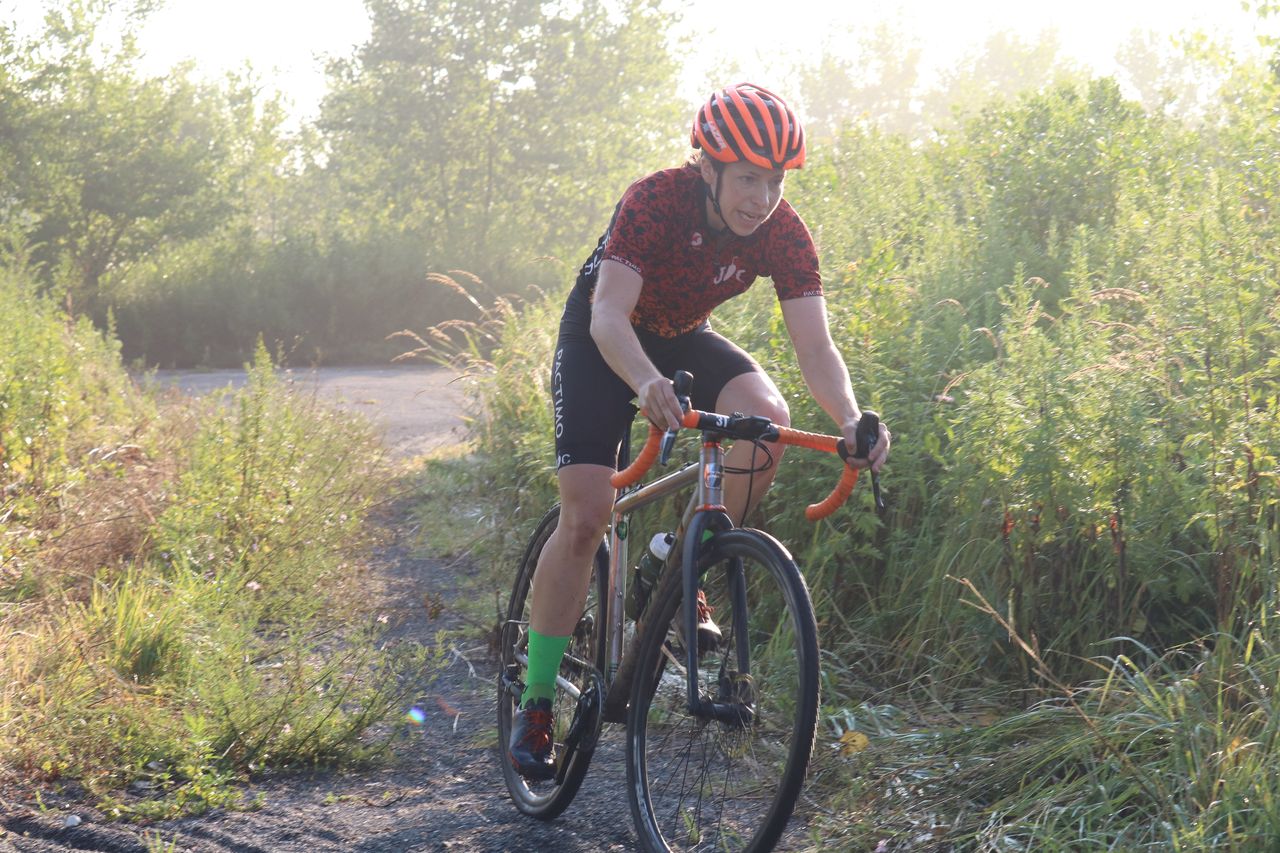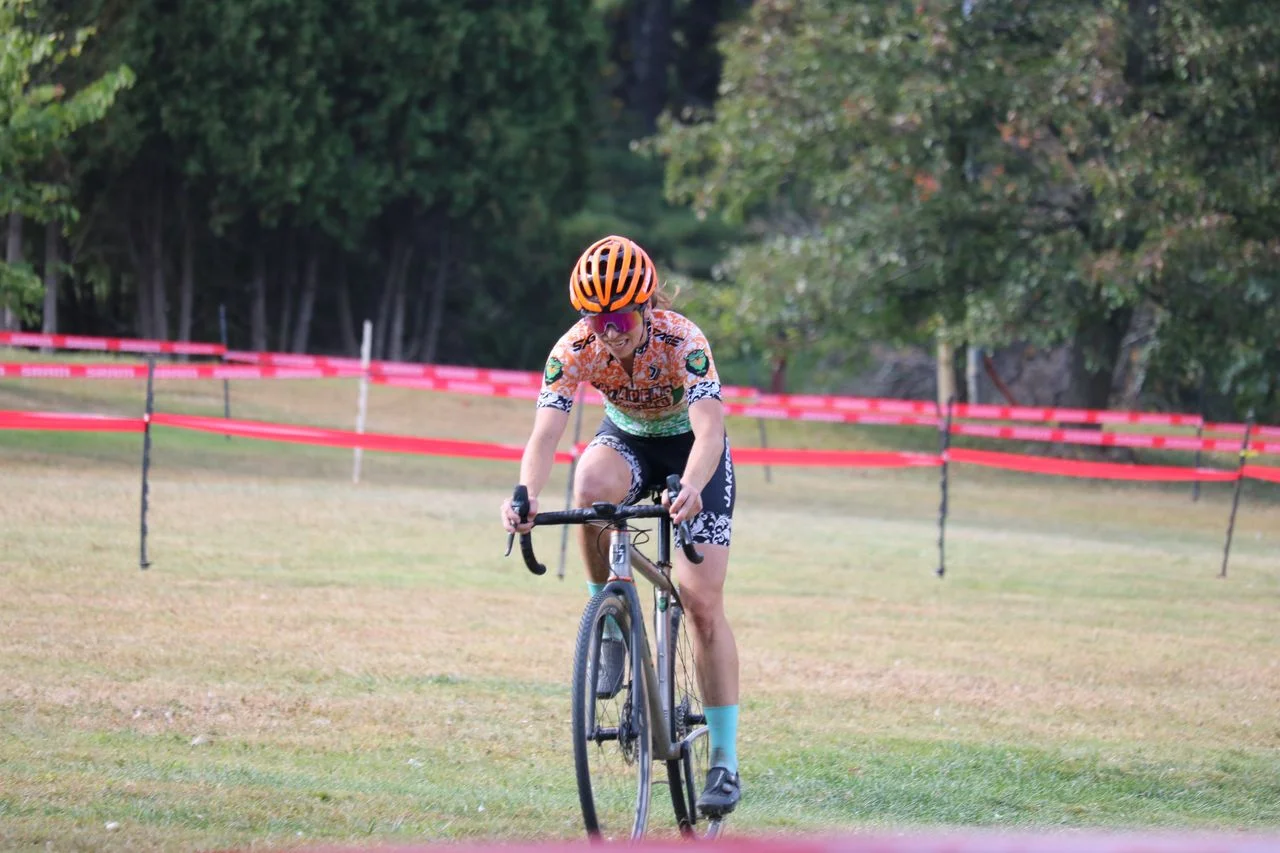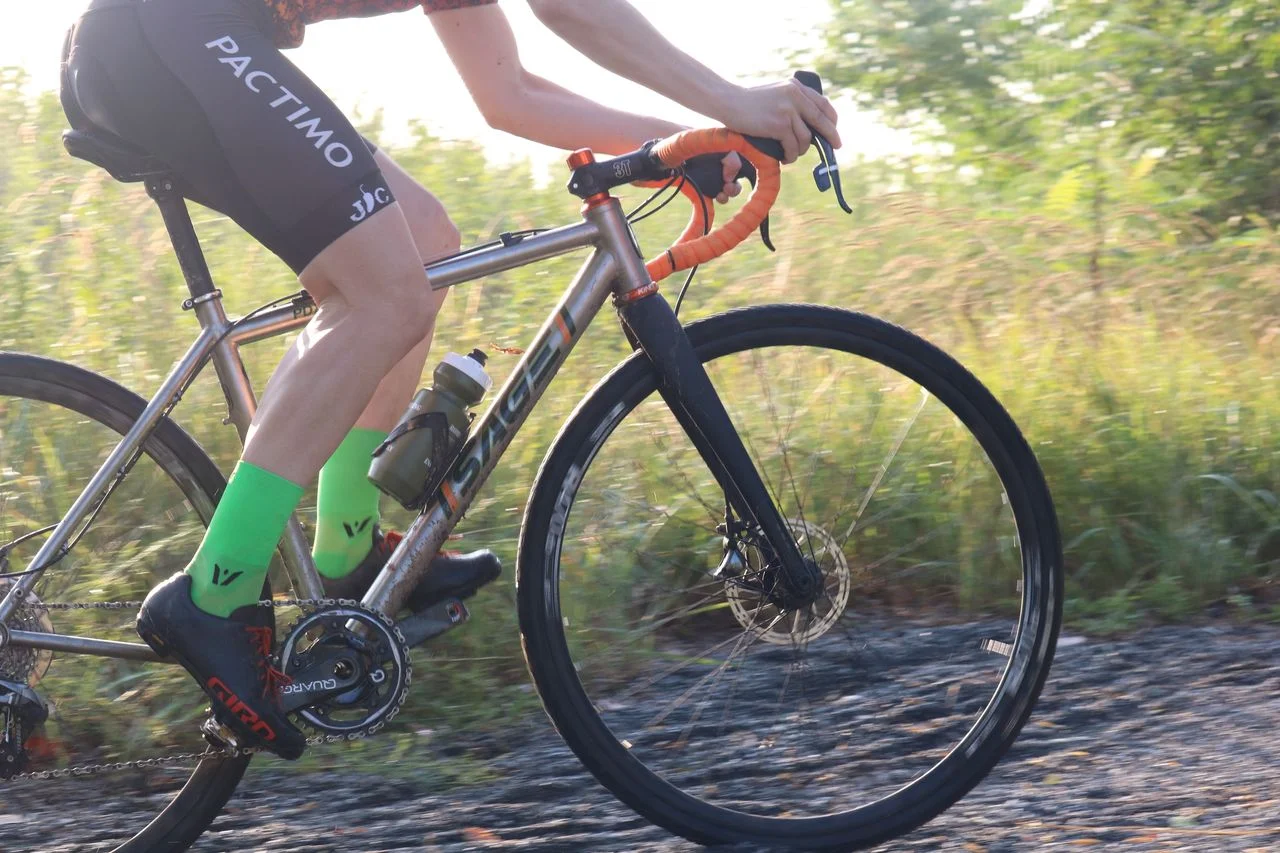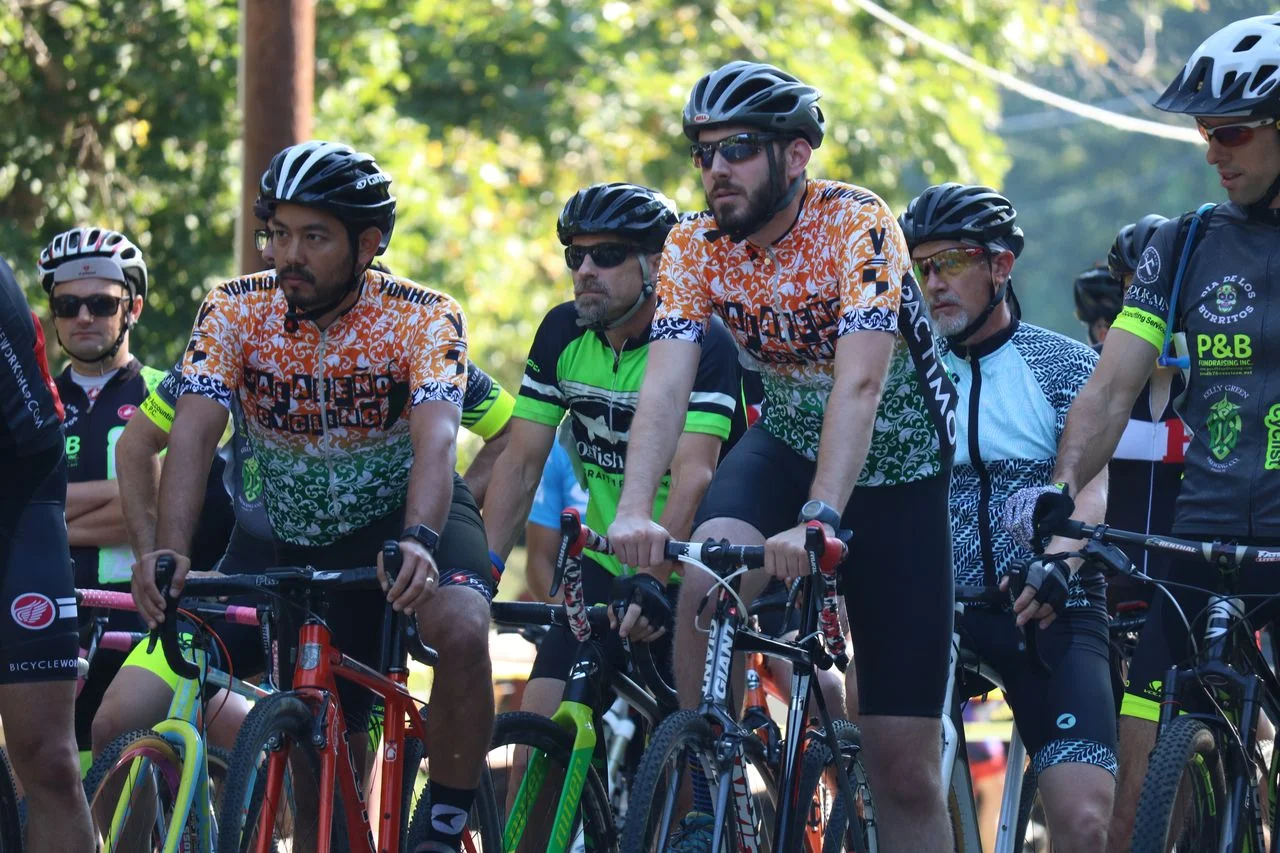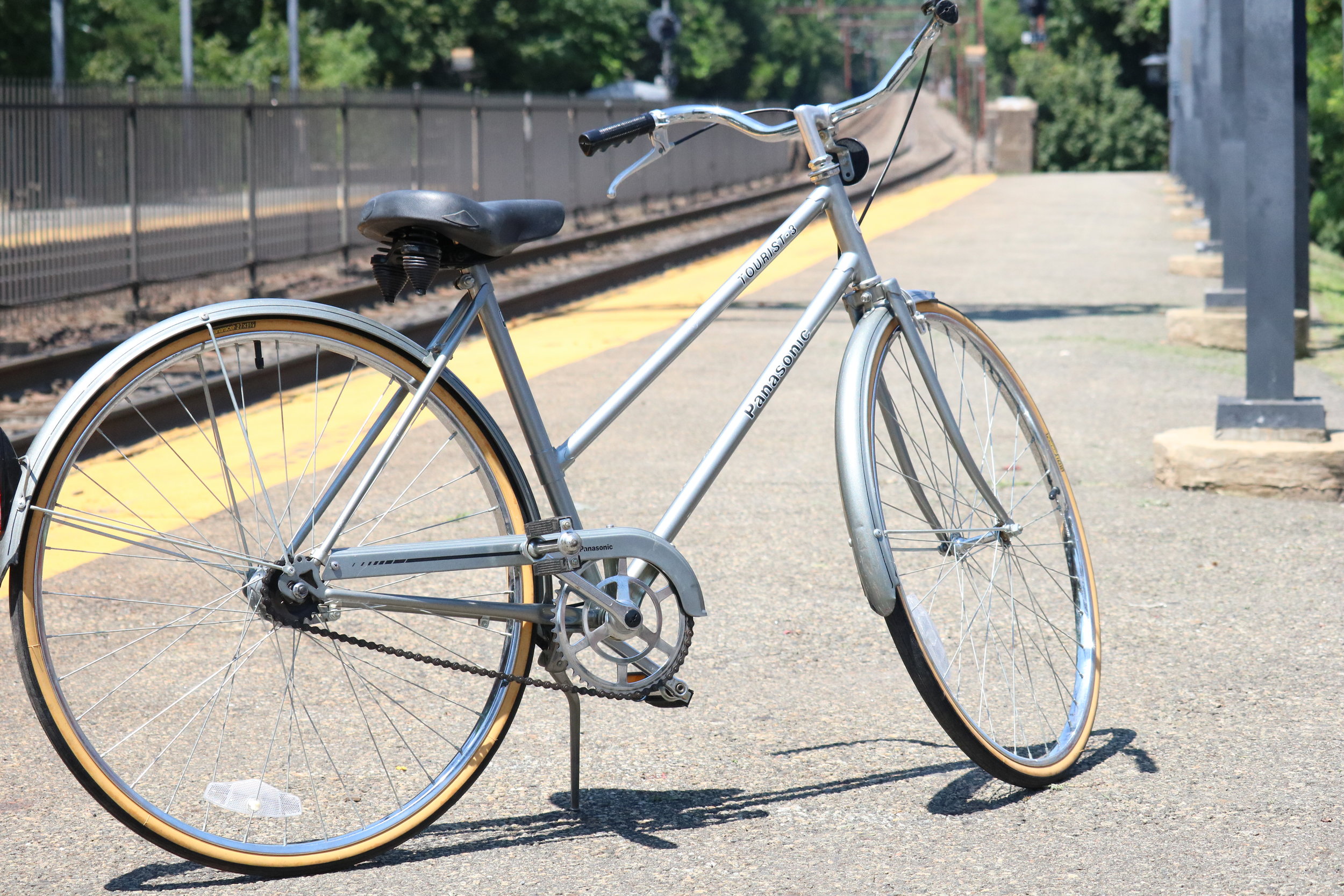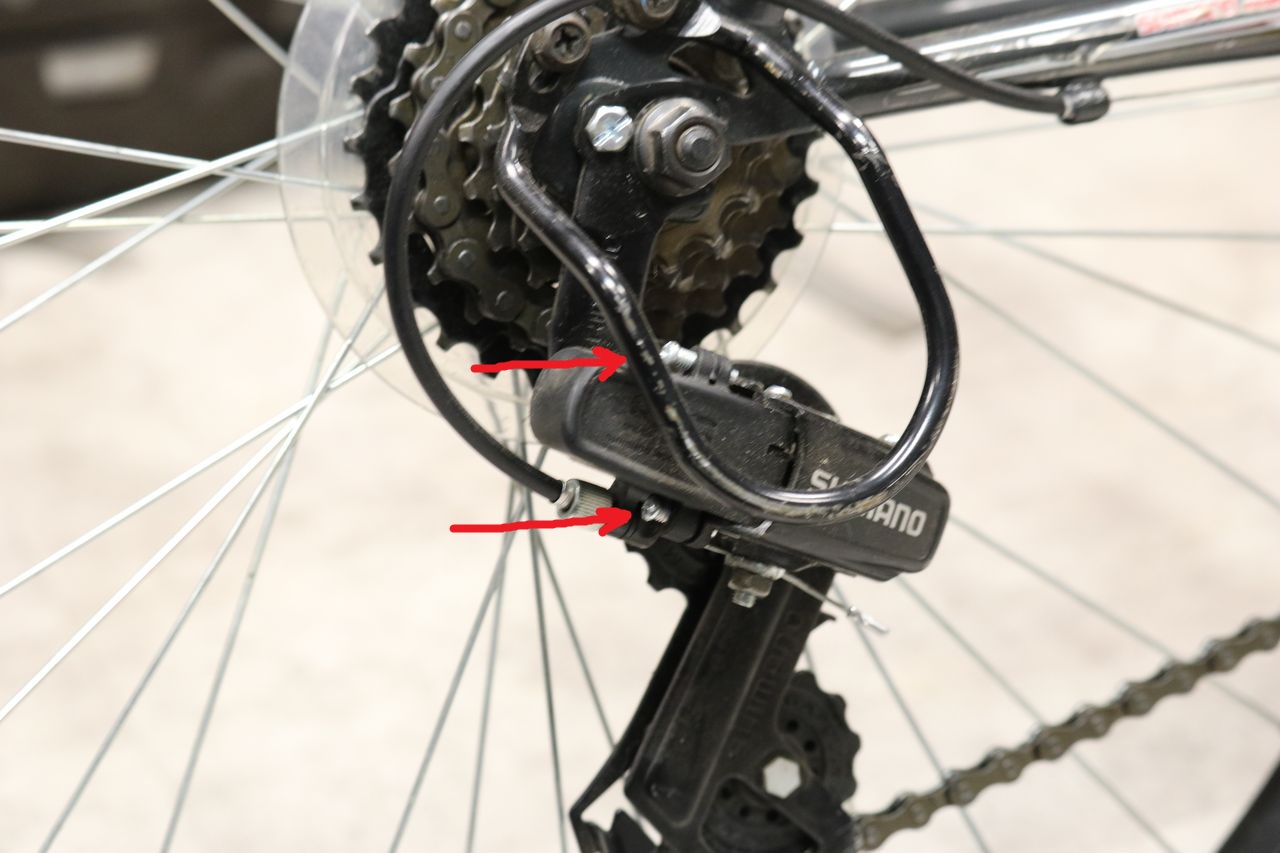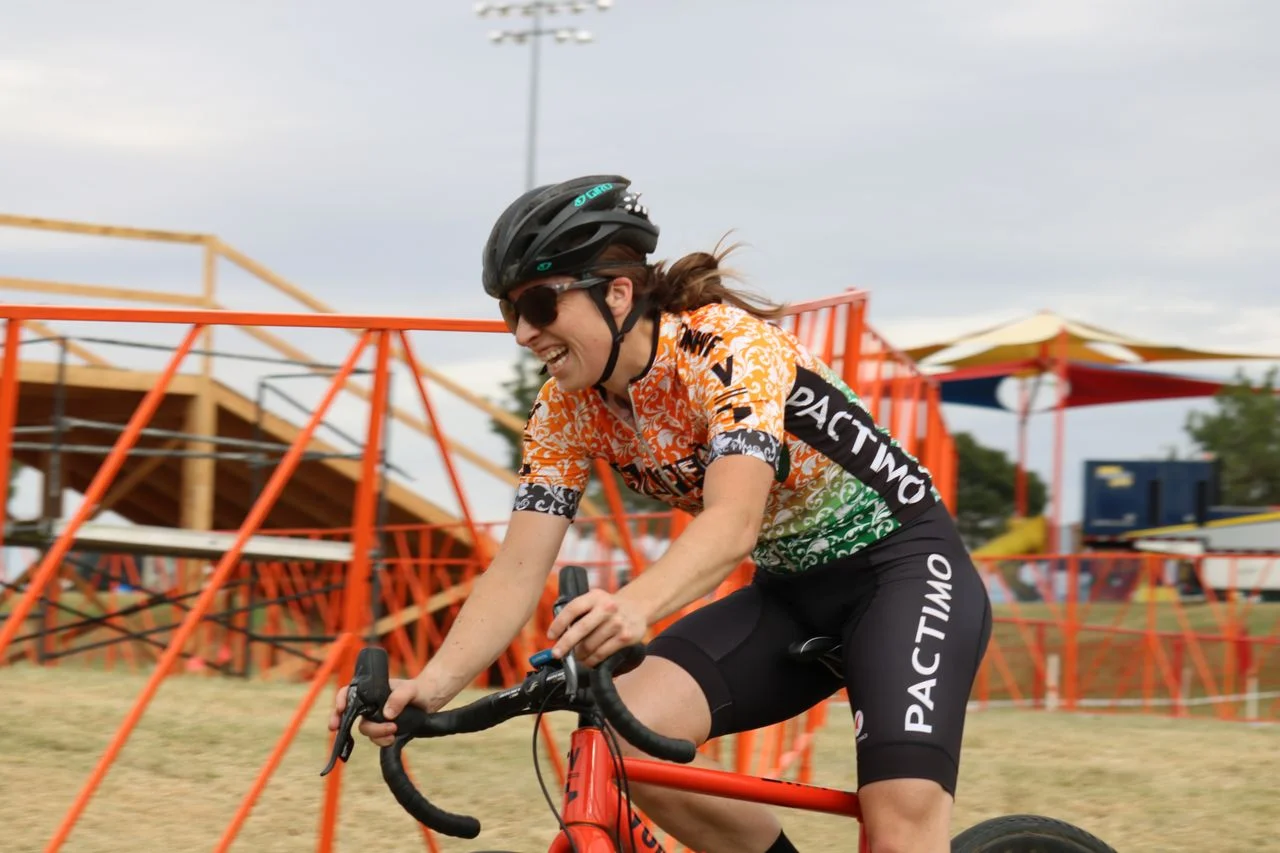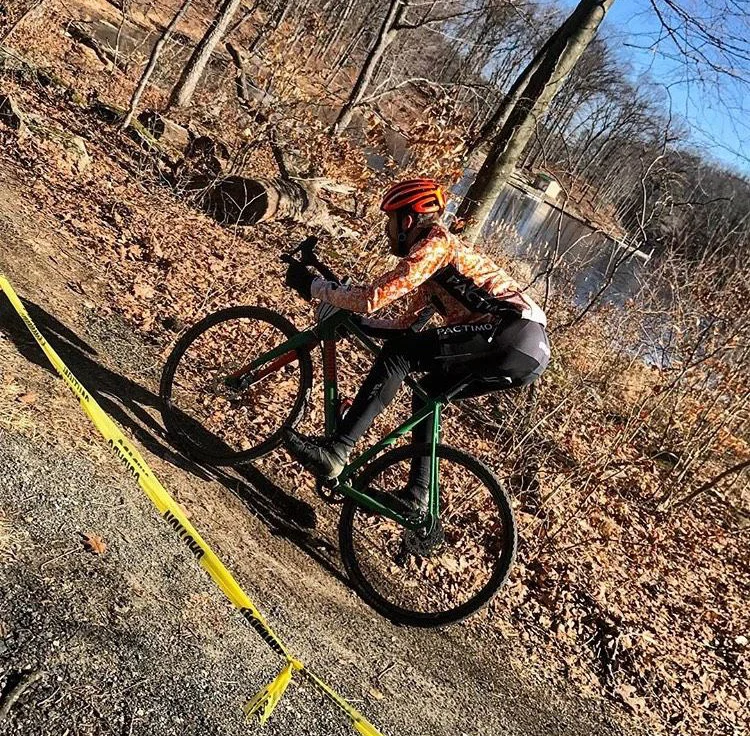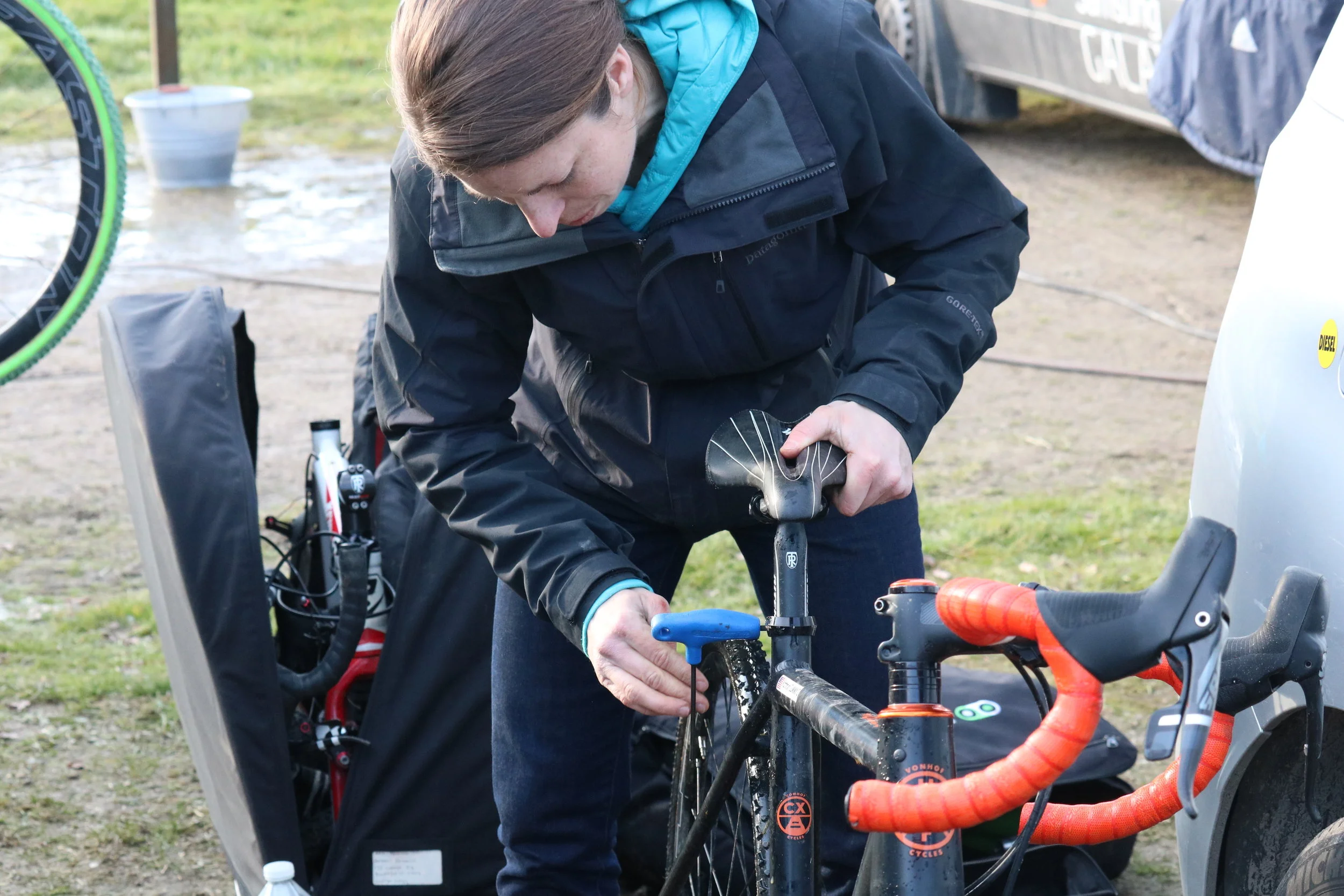February is outdoor cycling’s worst month, at least if you live north of the Mason-Dixon Line. Sure, cyclocross often gets its big World Championship race, followed by a few swan song events, but that’s Europe. In the United States, UCI caliber events are done and dusted in early January. For the first time in five years, Kate and I sat out the National Championships, which meant that we haven’t touched a race course since New York City’s Rainey Park.
Most years, I’m able to wait until my early March Birthday to get back into racing, often with crit events like Grant’s Tomb or the Branch Brook Park Series. But two months away from racing left us a little more champing at the bit for the start of 2018. So we decided to break tradition and find something competitive.
Cue the Monster Cross Race.
Every February, the Richmond area of Virginia holds a 50-mile gravel race, complete with closed crossings, pavement stretches, loose singletrack, and loads of fire roads. Coupled with a predicted 55 degree day, it was a hard race to pass up, especially now that Haymarket put the Monster Cross Race at the start of their new Mid-Atlantic Champions Series. Gravel in February is a new concept for both Kate and I, and so we wrote a race report on our experiences of the race below.
Andrew’s Race Report:
One of my biggest concerns leading up to this event was that unlike Kate, my outdoor rides had been practically non-existent since the cyclocross season ended. Now don’t get me wrong, my indoor training has probably never been so consistent during this time of year, but most of it is building a base for the New York City Triathlon. Loads of on the bike rides have been on my road bike, pin-pointing zones to the exact percentage: exactly the stuff you expect from a Type-A Personality bike racer in the NYC area.
The week before, I hopped on my Cross Bike and hit the trails as hard as I could. The day after, by body, and especially my quads, ached in ways I had long forgot about.
I realized my hyper-forward time trial position, complete with an ISM saddle and aero bars, was significantly different than my cyclocross bike. So in a moment of slight recklessness, I swapped the saddle and put on an absurdly aggressive stem to get me close enough to the position I had been riding in. If that wasn’t enough, I opted to run 40psi in my LAS tubulars, easily twice what I usually ride on cyclocross courses.
In short, I was really putting all my eggs in the basket that the course was well-packet and tame as I saw on the prior year race videos.
The starting grid gave me a little pause, though. At least half the hundreds of riders were on mountain bikes, and many of those on gravel bikes were rocking 38-40c tubeless tires. It was way too late to change my setup at this point, and I mentally prepared myself for a long walk in the worst case. I made a comment about having to drive through a five-hour snowstorm the night before, and a rider behind me, with a thick, Virginian accent, was in disbelief that I drove all the way from Northern New Jersey for this “little thing.”
In East Coast cyclocross races, starting grids are organized with Newtonian precision according to series, crossresults, or UCI points. In gravel racing, it is more like kindergarteners rushing forward to a nondescript start line all at once, vaguely organizing themselves by class color. In a way this has always been bizarre to me, as being at the front of a gravel race is almost as important. Sure, you don’t have to weave through riders in tight sections, but on fast roads and trails, the leaders’ group and drafting comes into play in ways that it never will on a cyclocross course. I started alongside Kate in the fourth row, and after a slightly chaotic start and a crash of younger riders on an early bridge, I realized I was now chasing rather than with the lead group.
I don’t think I could have ended up riding with a better group of racers on the first 25 mile lap. While I was pulling at the front of this chasing group for over 90% of the time, the riders were pretty cool to let me stay upfront in the tighter sections and get rad across the entire width of the course even though they could have nailed those turns on their wider tires a bit faster. I kept getting the best feedback from the back, such as “right hairpin turn coming up,” or “sharp rocks in this creek,” and I happily hammered at the front in the flats, doing what I could to keep everyone in hopeful contention.
Closer to the end of the first lap, I heard a cheering section tell us that we were a full seven minutes back on the leaders. Since I was going beyond my 50-mile limit 25 miles in, I knew there wasn’t a chance I’d bridge up to those front guys.
In the final 1.5 miles or the lap, the course became far more wicked, to the point that any mountain bikers who were able to linger in groups had a bit of an advantage at the end of the race. In this section, my upper body started feeling the effects of that high tire pressure and body position that allowed me to efficiently nail the hard packed dirt and pavement earlier.
I lost about twenty seconds on the group I was with through this section, and tried to make up for it after crossing the lap. I could still see them ahead of me for most of the rolling hills, but I lost sight of them at the worst possible time. In a pavement straightaway, I caught a race sign that stated “right ahead” followed by a cone. For the life of me, I couldn’t remember this turn on the last lap, but considering that I couldn’t see those guys either, led me to believe that I had to make the corner.
All of these thoughts didn’t happen in a split second either. I was standing at that corner like a chump for a short bit before darting to the woods. There were tire tracks… but not many. There were trails… but way too many leaves considering several hundred riders were passing through here. And I realized almost a mile in that it had been a wrong turn. Yea, I swore a little and was frustrated by getting lost on the course. By the time I got back, I still couldn’t see anyone in either direction: another common sight in gravel racing.
Below me, my cycling computer was tallying up the extra distance I had ridden along with the time, which was creeping by much slower than the last lap. I decided I had enough of the digital mockery for now and to get into the spirit of Gravel racing by switching the computer off.
Between the unyielding accordion of the start and not having dedicated, bright race tape to mark every centimeter of the course, gravel racing is a far cry from cyclocross, but in a way, there is something liberating about it that cyclocross, criterium, or triathlon events don’t have.
Gravel racing isn’t a game of perfection or inches.
More pre-race prep goes into attempting to control the uncontrollables, such as mechanicals and flats, than warming up on a trainer or dialing in the corners in a pre-lap. Sometime on the course, you will be on the wrong bike. Gravel bikes won’t be able to jet through a fast, root-laden descent as well as mountain bikes, and mountain bikes will feel like they’re slogging up a climb. Gravel teaches you to make peace with that.
I ended up taking a 28th place finish, far from the top ten I was secretly hoping for. Still, the Monster Cross course was able to give me personal achievements I could celebrate: chasing the leaders well on the first lap, and tearing through the last two miles really well on equipment not suited for it, passing a few more tentative riders in the process.
More importantly, it was the first time in a while where I just unplugged myself from the raw data of winter training and just got a good opportunity to literally get lost in the woods for while.
Kate’s Race Report:
Bike: VonHof Steel ACX with 42t chainring and 11-36 cassette
Tires: Challenge Chicane Tubular @ 35 psi
Nutrition: Infinit GO FAR (2 bottles)
The mass start of gravel races is something I haven't quite figured out, but I've blown up chasing some of the men enough times in the past that I decided to play it conservative and avoid bonking early. Sunday's race mantra was pretty much "don't bonk, fuel now, don't bonk". As a cross racer, I'm not used to fueling during races and I find I have to really make myself grab a bottle.
The start proved chaotic as expected, but after about the first three miles, everyone settled in to their own race pace. I had no idea where I was in the field, but figured I came for a fun ride and a solid workout, so I just needed to get after it. I started moving up on the climbs but struggled early with the loose descents. It's been a while since I bombed a fire road on 33mm file treads. This saw me trading spots every few minutes with some racers on mountain bikes - I would hit the climb hard and they would pass me again on the way down.
It can be ideal to start riding with a group and share the workload, but I wasn't ready to give up my control of the pace.
Riding my own race was proving to be a good idea as we hit an extended section of pavement around mile 10. My legs felt strong and the file treads were flying. I decided to go hard here to gap a woman I had been riding with, but apparently I went a little too hard and messed up the course directions. After seeing a sign that said "Right Turn" and an orange cone at a trailhead, I turned on to the trail and continued attacking. After a half mile or so, everything seemed oddly quiet. Fortunately the woman behind me gave a shout and we both turned around (apologies to her for leading her off course, she was a good sport about it). I guess the orange cone was blocking the trail. Back to the pavement we went to resume our chase.
At this point I was even more clueless about my standing in the field and kept reminding myself that it's February and you came for a good ride. Going hard for the entire race and trying to improve my descending became the only objective. I started working my way back into the field, finding myself moving through groups, bumping into friends along the way, and enjoying the exchange of friendly words with fellow racers. My predominantly solo effort continued and I was able to appreciate the awesome course the promoter created.
The last five miles required that I use every gear choice and cadence possible to avoid cramping. My power meter became a great reference to keep me from soft pedaling. Some of the cruelest climbs on course were saved for the end of the lap. The support and encouragement from lapped riders as I attempted to get out of the saddle to give an extra push really made a difference.
I crossed the line after about three hours and fifteen minutes of racing, completely depleted and satisfied with my day on the bike. It was enough for fifth place. Andrew was waiting, equally exhausted but also pleased with his ride. We both felt better about our mental state as well when we learned we had taken the same detour. Who can complain about more miles on a beautiful day though?!
One of my favorite aspects of gravel racing compared to road racing is the all-out racing from the start. Generally in a road race, you have to play the tactics game and there's often even a neutral start. I love that gravel racing is on from the whistle, allowing me to truly see the capability of my legs and mind. The roadies are as strong (if not stronger) and wiser (I hate playing chess with them), but I enjoy the simple, physical efforts of gravel racing.
I'm a sucker for these unsanctioned, low barrier events. The racing is challenging and competitive, but in different ways for all participants. There is a shared camaraderie between pros looking to test their legs for prize money and first timers hoping to finish the course on an old bike they found in the garage. Words of encouragement are shared all over the course, assistance is offered by way of pulls, mechanical help, and nutritionals, and conversations are had between athletes who would not normally interact. We are all equally drained from our effort at the end and everyone appears more relaxed in their raw, depleted state. Recovery drinks are traded for fried chicken and beer, stories of triumphs and mishaps on the trail are exchanged, and then we head our separate ways, knowing we have a home in the cycling community.

